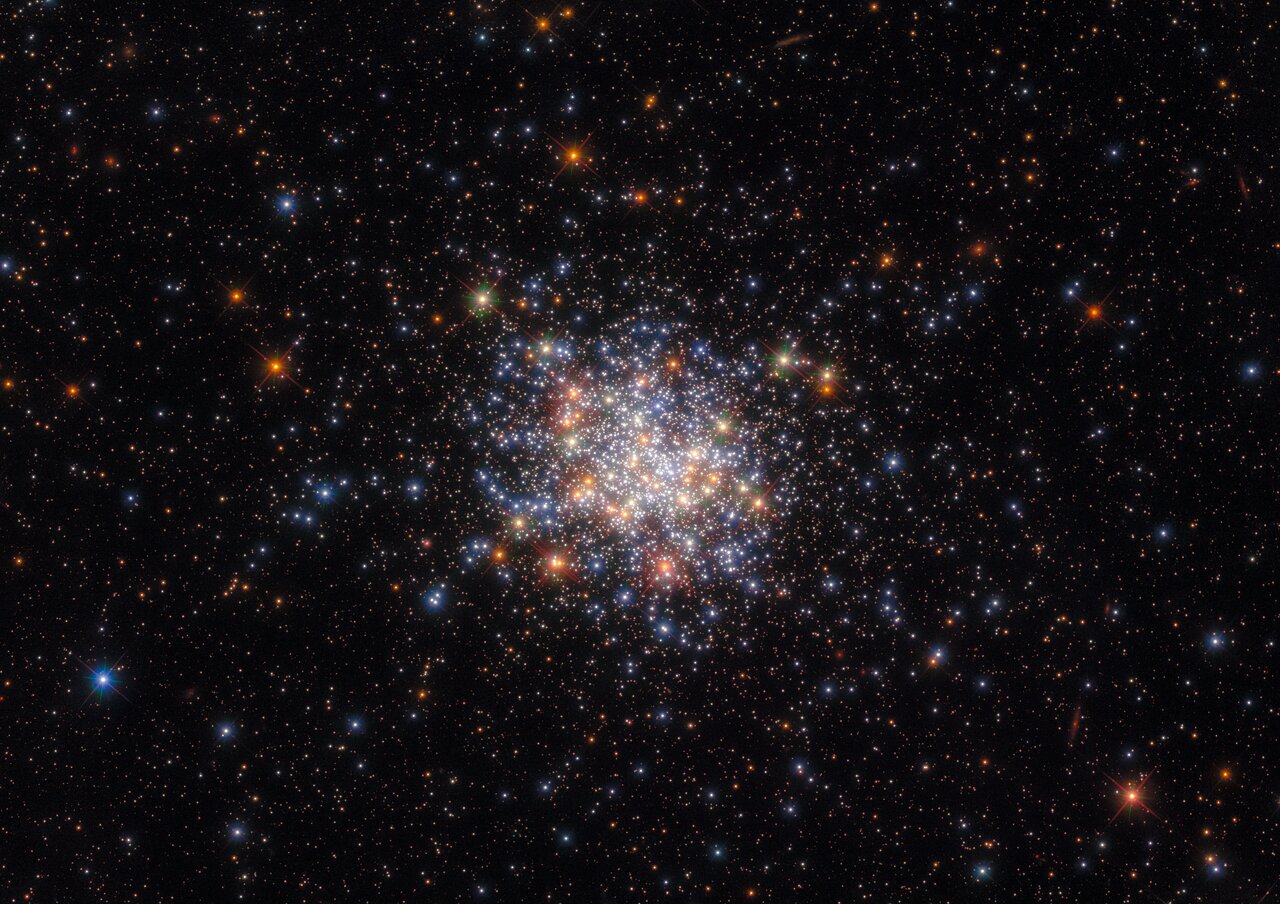Hubble Space Telescope spots star cluster glittering in a nearby galaxy (photo)
NGC 1755 is in good company: the Pleiades is another example of a small stellar cluster.

This small cluster of stars packs quite a visual morsel.
On Dec. 20, 2021, the team behind the Hubble Space Telescope published an image taken by the iconic observatory when it was looking towards the constellation Dorado in the southern sky.
Astronomers refer to this stellar gathering as NGC 1755. The open star cluster "resembles a pinch of salt strewn on a jet-black tablecloth," according to representatives from the European Space Agency (ESA) in a recent image description. ESA manages Hubble's operations alongside NASA.
Related: Hubble telescope shows the sparkling side of a spiral galaxy
These speckles are located relatively close to our planet, cosmically speaking. NGC 1755 is in the Large Magellanic Cloud, a satellite galaxy of the Milky Way located approximately 200,000 light-years from Earth.
Consider this stellar cluster a modest piece of celestial jewelry. Star clusters are any collection of stars that are gravitationally bound to one another, but this particular set is on the smaller side.
NGC 1755 is an open cluster, a smaller collection of stars home to generally younger stars, and it measures just 120 light-years across. (The universe is also speckled by massive stellar gatherings called globular clusters, which contain millions of stars that are usually farther along in their life cycles.)
Get the Space.com Newsletter
Breaking space news, the latest updates on rocket launches, skywatching events and more!
Although open clusters typically host similar stars, ESA representatives noted that stars of different properties can exist in the same cluster. Hence using Hubble to study clusters: Astronomers take advantage of Hubble's instrumentation and the Large Magellanic Cloud's proximity to Earth to get a really good look at all the different types of stars that can live together in a cluster.
NGC 1755 is in good company: the Pleiades are another example of an open star cluster. That bright collection of stars in the constellation Taurus is made up of just 800 or so stars.
The Hubble Space Telescope launched in 1990 and has been peering into space for more than 30 years. It recently recovered from a glitch that took its science instruments offline; the last one to be returned from safe mode got back to work on Dec. 7.
Follow Doris Elin Urrutia on Twitter @salazar_elin. Follow us on Twitter @Spacedotcom and on Facebook.
Join our Space Forums to keep talking space on the latest missions, night sky and more! And if you have a news tip, correction or comment, let us know at: community@space.com.

Doris is a science journalist and Space.com contributor. She received a B.A. in Sociology and Communications at Fordham University in New York City. Her first work was published in collaboration with London Mining Network, where her love of science writing was born. Her passion for astronomy started as a kid when she helped her sister build a model solar system in the Bronx. She got her first shot at astronomy writing as a Space.com editorial intern and continues to write about all things cosmic for the website. Doris has also written about microscopic plant life for Scientific American’s website and about whale calls for their print magazine. She has also written about ancient humans for Inverse, with stories ranging from how to recreate Pompeii’s cuisine to how to map the Polynesian expansion through genomics. She currently shares her home with two rabbits. Follow her on twitter at @salazar_elin.









